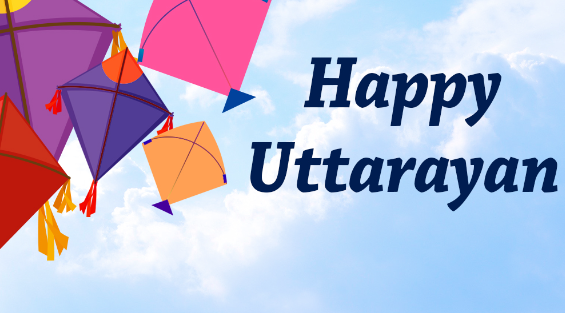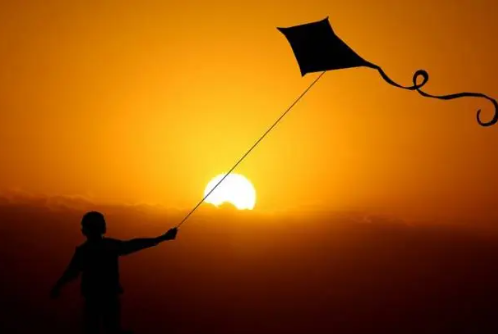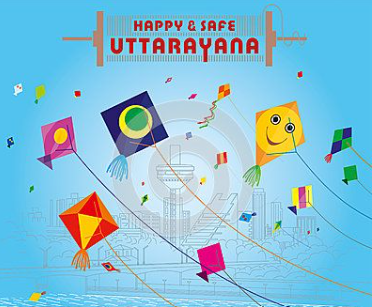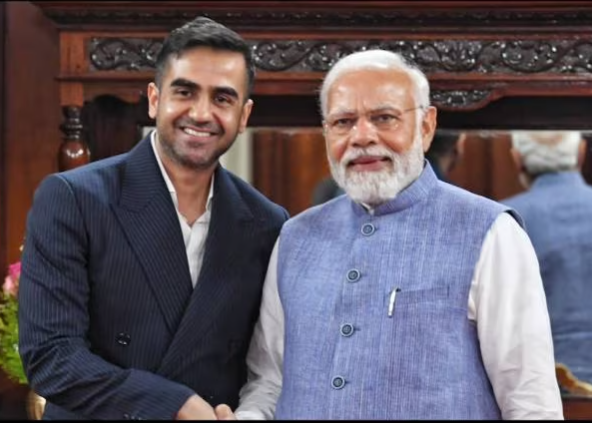
Uttarayan 2024 Date and Time – January 14 or 15? Discover the Shubh Muhurat for Celebration
Uttarayan, beyond its visual spectacle of kites and lanterns, embodies a deeper cultural and spiritual significance
Uttarayan, a vibrant festival celebrated with fervor in Gujarat, marks the transition of the sun from Sagittarius to Capricorn, symbolizing the onset of longer days and the end of winter’s chill. Falling on the same day as Makar Sankranti, Uttarayan holds a special place in the hearts of people across the state. On this auspicious day, which is being observed on January 15 in 2024, the skies above Gujarat come alive with colorful kites, creating a mesmerizing spectacle from dawn till dusk.

The festival carries profound significance, not only in Gujarat but also across India, where various regions celebrate the shift from winter to summer in diverse ways. Lohri in Punjab, Pongal in Tamil Nadu, Bihu in Assam – each region adds its unique touch to the festivities. Uttarayan, with its name derived from “Uttar” (north) and “Ayan” (movement), captures the essence of the sun’s northward journey, heralding the arrival of longer and brighter days post-Makar Sankranti.
The heart of Uttarayan celebrations lies in the age-old tradition of kite-flying. As the sun graces the sky, people across Gujarat ascend to their terraces, uniting in the spirit of competition and camaraderie. Kite-flying enthusiasts engage in friendly battles, filling the air with the vibrant hues of fluttering kites. The festivities extend beyond the daylight hours, as post-kite flying, the sky transforms into a canvas illuminated by the graceful dance of sky lanterns, symbolizing hope and the promise of prosperous times ahead.

This year, Uttarayan aligns with Makar Sankranti on January 15, a day after Lohri celebrations. While January 14 has been the traditional date for these festivities, the shift adds an extra day of anticipation and excitement. Following the grand celebrations, the subsequent day is celebrated as Vasi Uttarayan or stale Uttarayan in Gujarat, adding another layer to the multi-day jubilation. According to drikpanchang, the Uttarayan Sankranti Moment is set to occur at 2:54 am.
The festival’s significance extends beyond the joyous revelry. For farmers across the country, the sun holds immense importance. Makar Sankranti, and consequently Uttarayan, are considered auspicious as the sun begins its upward trajectory, bringing an end to the bitter cold and shorter days. The advent of longer and warmer days is commemorated with bonfires, symbolizing the triumph of light over darkness.
Traditional delicacies play a central role in Makar Sankranti celebrations. From Undhiyu to Puran Poli, Gud ki chikki to til laddoo, and Gajak, these culinary delights made from sesame seeds, jaggery, and the fresh harvest become an integral part of the festivities, tantalizing the taste buds and adding to the festive spirit.
As the kites soar high in the sky, and the aroma of traditional delicacies wafts through the air, Uttarayan in Gujarat becomes a celebration that transcends generations, uniting communities in a colorful tapestry of tradition, joy, and hope for a brighter tomorrow.

Uttarayan, beyond its visual spectacle of kites and lanterns, embodies a deeper cultural and spiritual significance. The festival serves as a reminder of the cyclical nature of life and the eternal dance of time. It marks the symbolic end of winter’s hibernation, ushering in a period of renewed energy and vitality. The sun’s northward movement is not just a celestial event but a metaphorical journey towards growth, prosperity, and the triumph of light over darkness.
The spirit of Uttarayan extends beyond geographical boundaries, creating a sense of unity among diverse communities. Families and friends come together on terraces, sharing laughter, stories, and the thrill of kite battles. The competitive yet festive atmosphere reflects the spirit of healthy competition, teamwork, and the joy of shared experiences.
The festival also echoes the rich agricultural traditions of India. For farmers, Uttarayan holds immense agricultural importance, signaling the shift towards longer days, warmer weather, and the beginning of the harvest season. The celebration of fresh harvest delights during Makar Sankranti symbolizes gratitude for the bounties of the land and the promise of abundance in the coming months.
In Gujarat, the post-kite flying hours see the night sky adorned with sky lanterns, releasing a cascade of dreams and aspirations. This luminous display becomes a metaphor for the collective hopes of the community, shining bright against the canvas of the dark night. The beauty of these lanterns extends beyond the visual spectacle; it encapsulates the collective optimism and spirit of progress that defines Uttarayan.
Moreover, the festival’s influence transcends generations. Elders pass down the art of kite-flying to the younger ones, imparting not just a skill but a cultural legacy. This intergenerational exchange fosters a sense of continuity and connection to cultural roots, making Uttarayan not just a celebration but a living tradition.
As the festival culminates in the Uttarayan Sankranti Moment at 2:54 am, there is a collective pause, a moment of reflection and gratitude for the cosmic dance that shapes our lives. The festival, with its lively kite-flying competitions, traditional delicacies, and symbolic rituals, becomes a microcosm of the larger Indian ethos – a celebration of life’s cyclical nature, the importance of community, and the eternal pursuit of light and prosperity.
Uttarayan in 2024 is not just a date on the calendar; it is a celebration that encapsulates the spirit of Gujarat, the essence of Indian culture, and the universal theme of hope and renewal. As kites crisscross the sky and lanterns illuminate the night, Uttarayan becomes a tapestry of colors, stories, and aspirations, woven together by the threads of tradition and shared joy. May the kites soar high, and the lanterns light up the path to a prosperous and harmonious future.
For the latest updates-click here.


